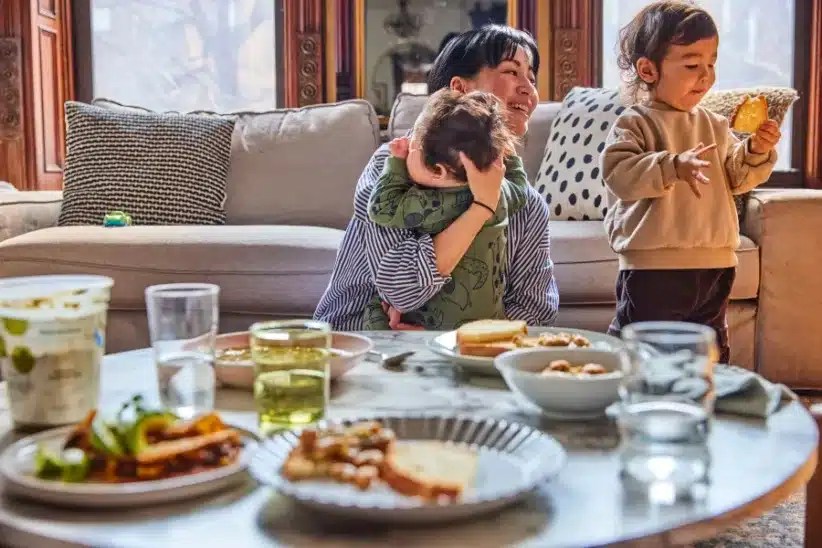I have many fond childhood memories of doing puzzles with my family. My favorite one depicted different candy bars and was 1,000 pieces. It took us weeks to complete. After finishing the border, we went right to the easiest part of the puzzle: the words on the wrappers.
There was a stack of puzzles that was in the corner of the dining room. As soon as we finished one puzzle, we began another.
We never got bored of doing the same puzzle over and over again, as it always felt like a new challenge. It was always heartbreaking when we had to clean up an unfinished puzzle so that the dining room table could be used for holiday dining.
It was the best time! We each had a role to play. My dad hates puzzles, so he simply sat at the end of the table and chatted with us while we put pieces together. My sister and I fought to sit in front of the puzzle and my mom calmly watched it all unfold. She was more dedicated than all of us and often snuck down late into the night to fit in one more piece.
What a great time that was! A time of family bonding that taught me about teamwork, project planning, patience, and how to share. It taught me to celebrate team members’ success while I struggled. When I sometimes became frustrated — puzzles can be hard! — I learned to take that emotion in stride. I’m a better person for having done puzzles with my family!
During long weekends, I sometimes spread a puzzle across my living room floor. The activity warms my heart and brings me right back to my childhood.
Do you regularly complete activities like this now with your family? For many families, these types of bonding activities have unfortunately been replaced by video games and watching the plethora of offerings available on the various screens around the house.
Regular family bonding time that requires everyone to put their devices away and for all members to interact is part of what glues a family together. This creates opportunities to teach your children skills that can only be learned through experience. Time when your family accomplishes something together is critical.
Considering our busy schedules, it can be challenging to find time to connect like this. My biggest tip for you: commit small amounts of time each day. Some days, my family and I only had five minutes to work on the puzzle before we had to go to school, or 10 minutes at night before bedtime. Those small and consistent pieces of the day made a huge impression me. This can happen for your child!
The kind of time you spend with your family is more important than the amount of time you spend. This means that there is no multitasking — including checking e-mails while your small one does an activity near by. Try to create clear, uninterrupted, and focused time when you and your small one can accomplish something together.
If you want more details on how to create better behavior in your home, check out my new book, “Love Your Classroom Again.” Although the examples are based on a classroom setting, the strategies are applicable to any environment.
For a special gift for New York Parenting readers, please visit: bit.ly/vid-nyp
Dr. Marcie Beigel is a behavioral therapist based in Brooklyn. She has worked with thousands of families for more than 15 years. For more on her, visit www.Behav





















